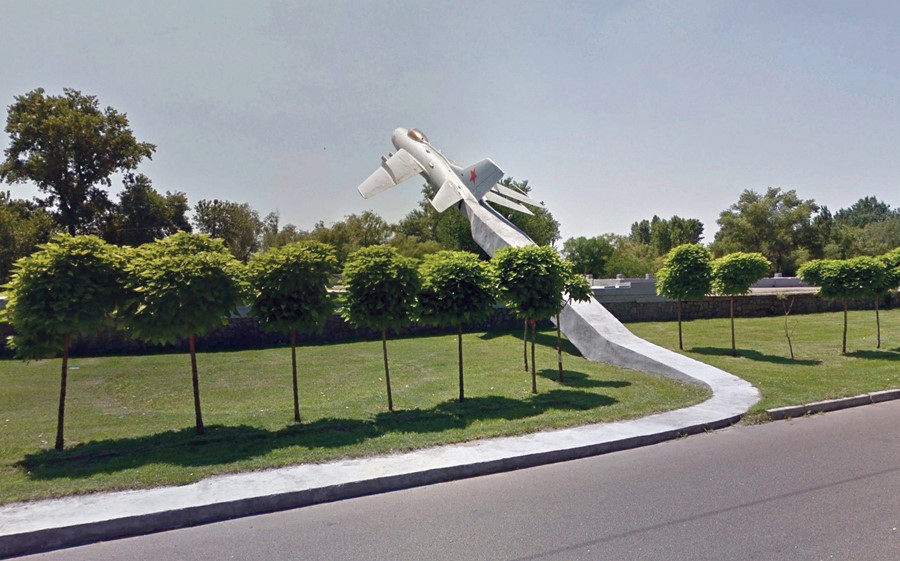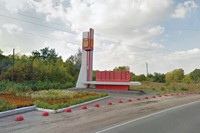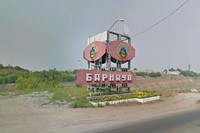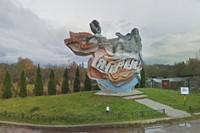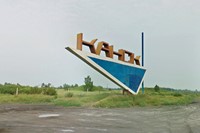Photographer Jason Guilbeau spent months travelling virtually around what was once the USSR, and his images are now published in a book entitled Soviet Signs and Street Relics, which captures the last physical remnants of the Soviet Union
The photographs in new book Soviet Signs and Street Relics were taken across countries that made up the former USSR – all from the French photographer Jason Guilbeau’s home computer. Guilbeau used Google Street View to travel virtually – a concept newly familiar to many as lockdowns have continued for weeks around the world – around Russia, Ukraine, Kyrgyzstan and other countries that formerly made up the USSR, and documented graphic signs and structures for his new book, which is published by Fuel Design.
Soviet Signs and Street Relics brings together Guilbeau’s shots of fading roadside signs and decorative monuments, many featuring the symbolic hammer and sickle. Some are playfully artistic – see a sliced watermelon in the middle of seemingly deserted countryside, or the undulating waves of a colourful sculpture in Kaliningrad – and others perhaps meant to signal power and strength – planes taking off into the sky – but all form a striking reference to the history of their surroundings, and the Soviet regime during which they were constructed.
“Relics of the Soviet past have the power to transport us through time and space,” writes Clem Cecil in Soviet Signs and Street Relics. “Those featured in this book lie far off the beaten track, in places it is unlikely we will ever visit.” Guilbeau travelled thousands of kilometres using Google Street View, whose images sometimes feature people caught unawares as the area is mapped by the innovative technology.
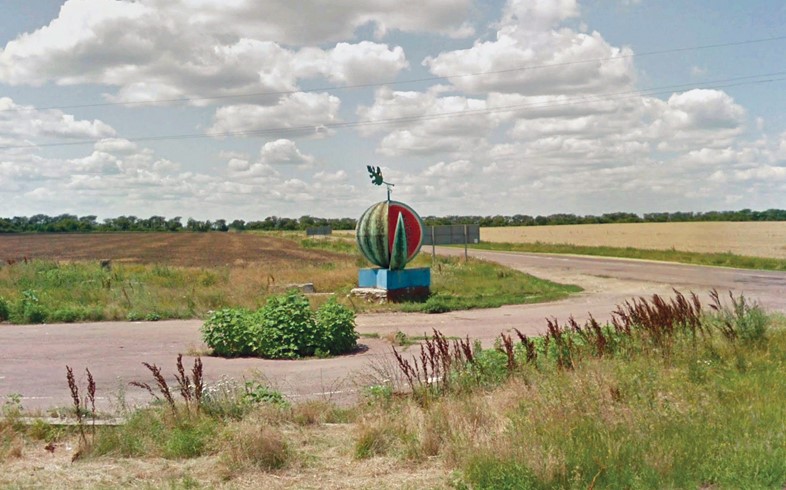
“Commissioned by local authorities, the desire of the regime to signpost all parts of its empire corresponded with the desire to keep everyone employed, including artists,” continues Cecil, in an essay contextualising the myriad signs and monuments that Guilbeau spent months documenting. Though often rooted in propaganda and bids to maintain patriotism, the relics’ “fundamental message was that space and time had been conquered”. In Soviet Signs and Street Relics, Cecil acknowledges the irony at the heart of Guilbeau’s satisfying photographs: that the power and dominance illustrated by the towering monuments would eventually fade alongside the dissolution of the USSR, to then be meticulously documented by American technology for anyone around the world to see. “They are the last physical remnants of the Soviet Union, obsolete survivors, captured by an omniscient technology that is continually deleting and replenishing itself.”
Soviet Signs and Street Relics by Jason Guilbeau is out now, published by Fuel Design.
